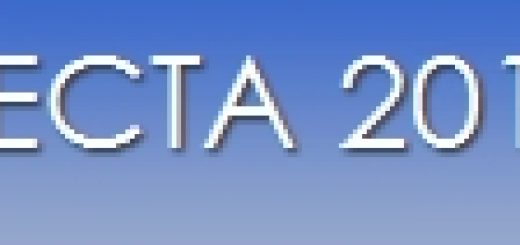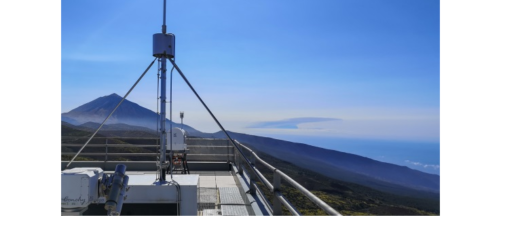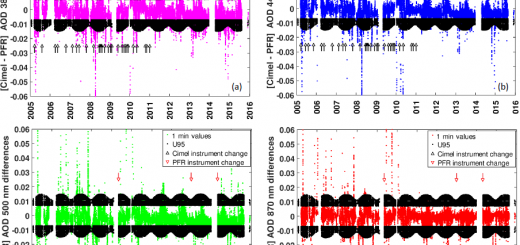The paper titled “A statistical approach to quantify uncertainty in carbon monoxide measurements at the Izaña global GAW station: 2008–2011” has been published in the scientific journal “Atmospheric Measurement Techniques”
![]()
The paper titled “A statistical approach to quantify uncertainty in carbon monoxide measurements at the Izaña global GAW station: 2008–2011” has been published in the scientific journal “Atmospheric Measurement Techniques” (AMT) after being published in “AMT-Discussions” and passing satisfactorily the open peer-review process.
The final reference of this paper is:
Gomez-Pelaez, A. J., Ramos, R., Gomez-Trueba, V., Novelli, P. C., and Campo-Hernandez, R.: A statistical approach to quantify uncertainty in carbon monoxide measurements at the Izaña global GAW station: 2008–2011, Atmos. Meas. Tech., 6, 787-799, doi:10.5194/amt-6-787-2013, 2013.
The paper can be downloaded from:
http://www.atmos-meas-tech.net/6/787/2013/amt-6-787-2013.pdf
Summary with some plots:
Carbon monoxide at Izaña observatory is measured using a Reduction Gas Analyser. The measurement system configuration, the instrumental response function (see figure 1), the calibration scheme, the data processing, the Izaña’s 2008-2011 CO nocturnal time series (see figure 2), and the mean diurnal cycle by months are presented (see Figure 3).
Figure 1. Least-squares fitting of a typical calibration which uses 5 standards. The response function used is a potential function in relative chromatographic peak height.
Figure 2. Daily night means (20:00-08:00 UTC; in this time period, conditions are of free troposphere) for the carbon monoxide mole fraction measured at Izaña Observatory (blue squares). Fitted interannual component (green curve) and fitted annual cycle superposed (red curve).
Figure 3. Carbon monoxide mean diurnal cycle relative to the nocturnal background level. CO is typically stable during the night period, and reaches a maximum around 13:00-15:00 UTC due to the arrival of contaminated air with the upslope thermal wind which occurs during daylight time.
We have developed a rigorous uncertainty analysis (error analysis) for carbon monoxide measurements carried out at the Iza˜na station, which could be applied to other GAW stations. We determine the combined standard measurement uncertainty taking into consideration four contributing components (see Figure 4): uncertainty of the WMO standard gases interpolated over the range of measurement, the uncertainty that takes into account the agreement between the standard gases and the response function used, the uncertainty due to the repeatability of the injections, and the propagated uncertainty related to the temporal consistency of the response function parameters (which also takes into account the covariance between the parameters). The mean value of the combined standard uncertainty decreased significantly after March 2009, from 2.37 nmol/mol to 1.66 nmol/mol, due to improvements in the measurement system. A fifth type of uncertainty we call representation uncertainty is considered when some of the data necessary to compute the temporal mean are absent.
Figure 4. Uncertainty components (and subcomponents) of the measured CO mole fraction.
In situ hourly means are compared with simultaneous and collocated NOAA flask samples. The uncertainty of the differences is computed (see Figure 5) and used to determine whether the differences are significant. For 2009–2011, only 24.5% of the differences are significant, and 68% of the differences are between −2.39 and 2.5 nmol/mol. The annual mean differences for 2009–2011 are well within the 2 nmol/mol compatibility goal of GAW.
Figure 5. Differences between NOAA flask samples and simultaneous in-situ hourly means. Error bars indicate comparison uncertainty.







